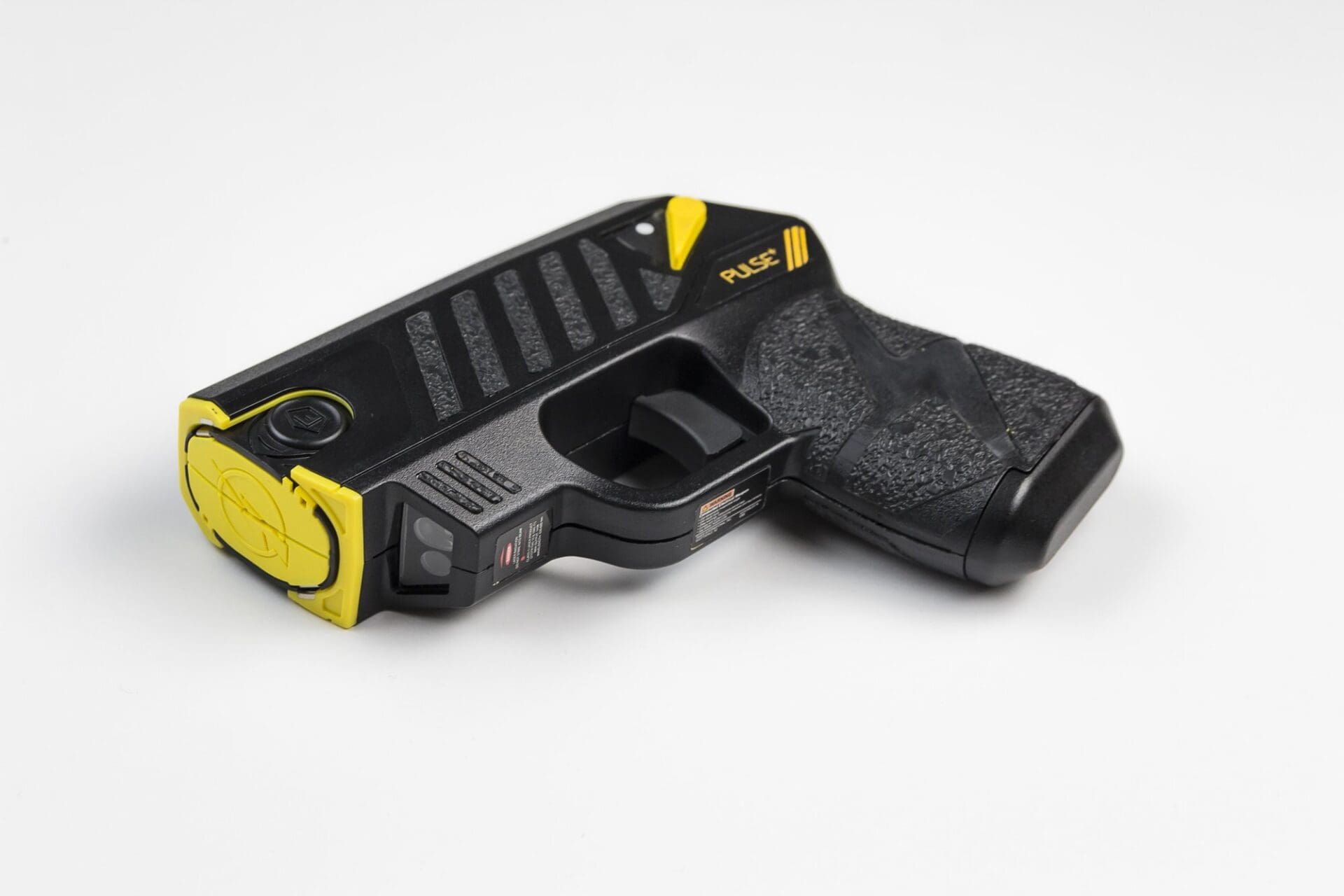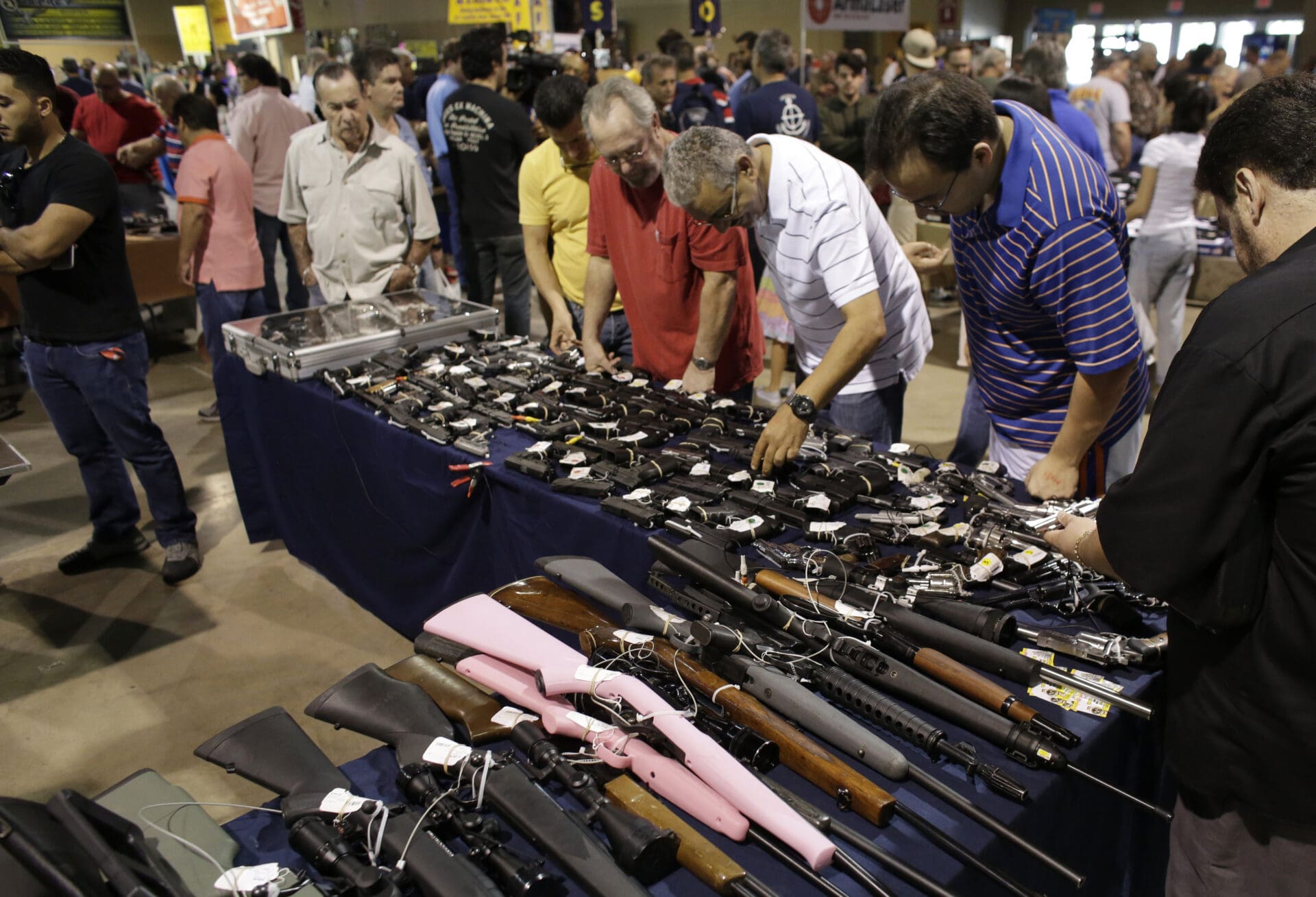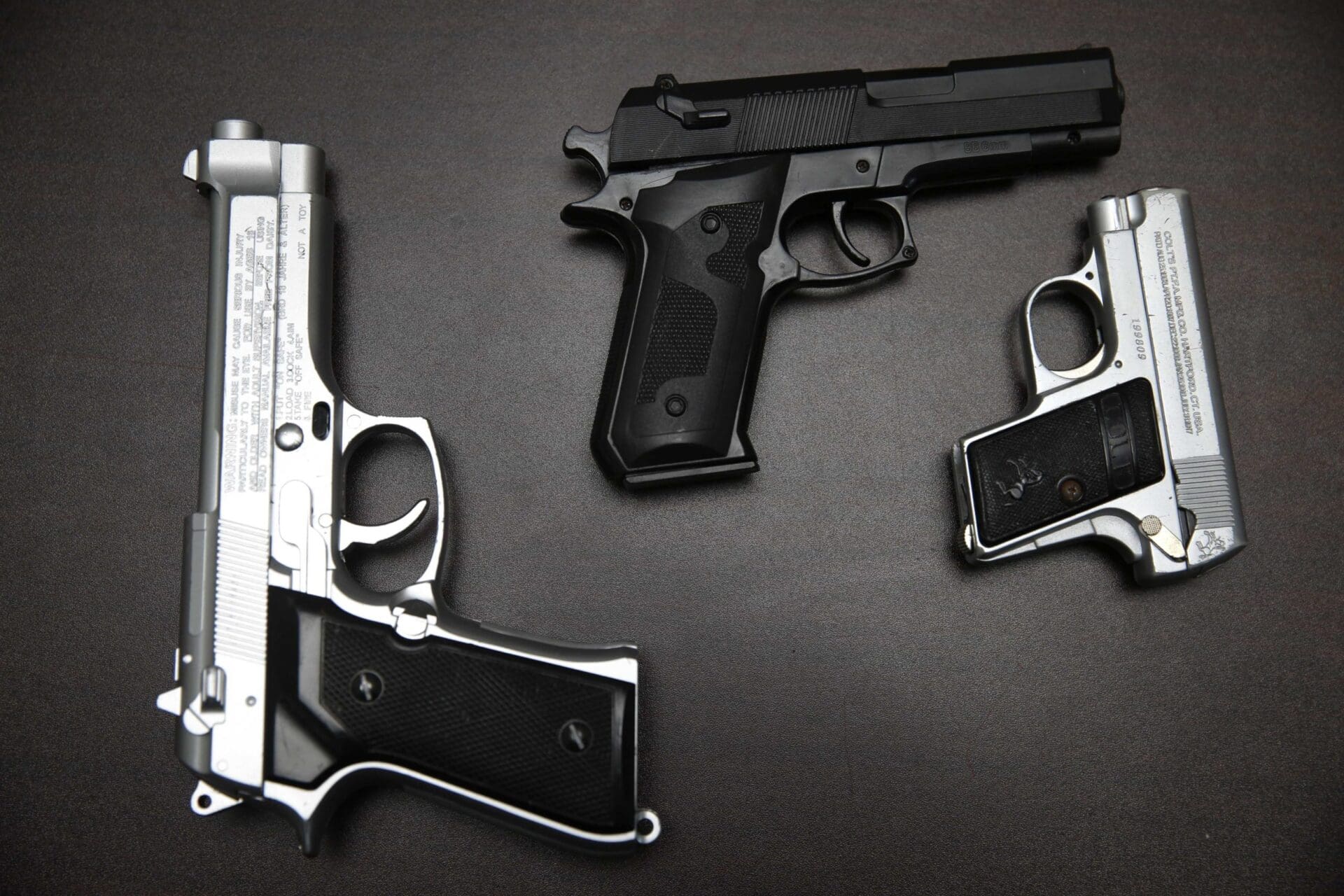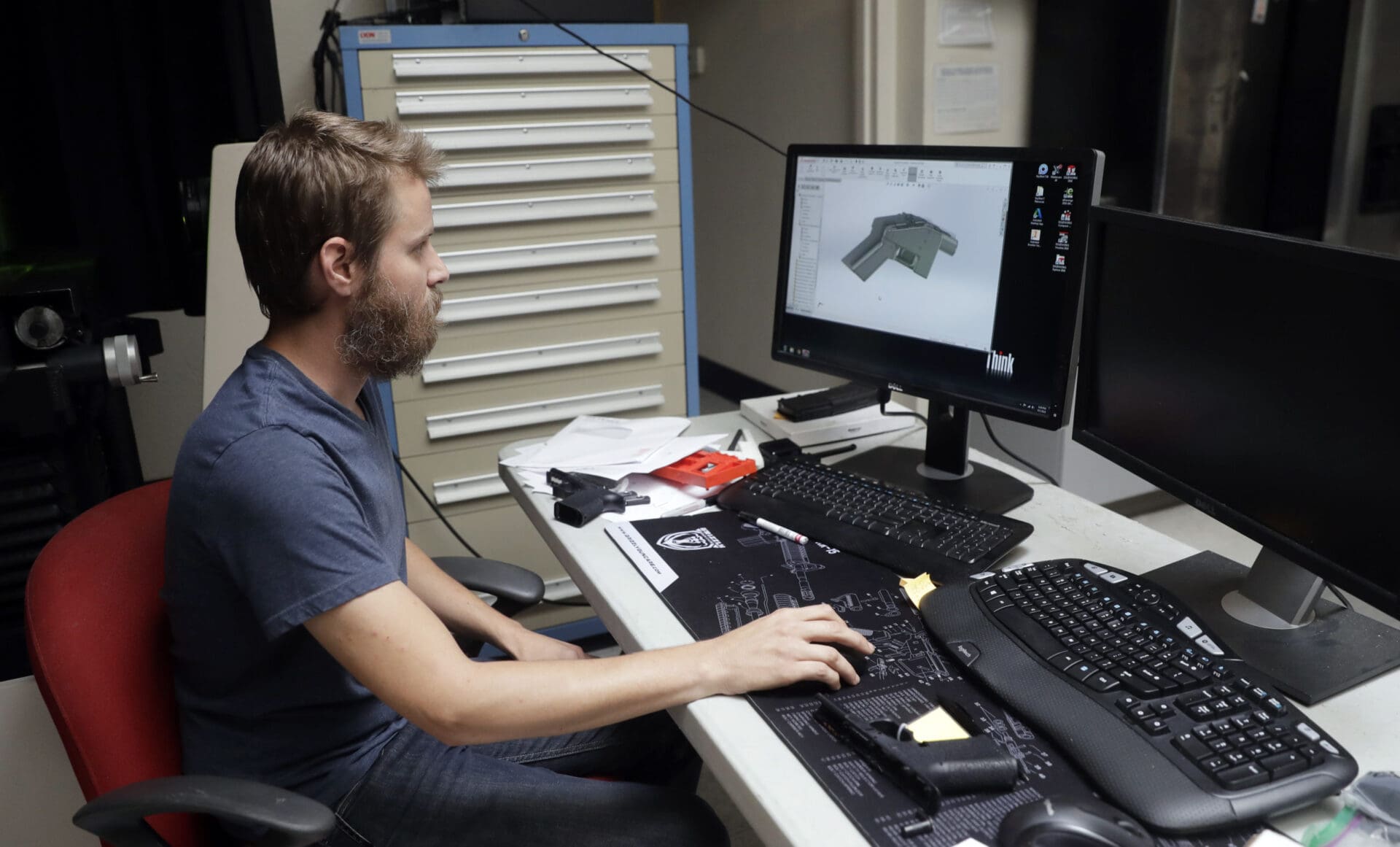This is TTAG’s weekly roundup of legal and legislative news affecting guns, the gun business and gun owners’ rights. For a deeper dive into the topics discussed here, check out this week in gun rights at FPC.
Blueprints for 3D printable guns remain in limbo
The Executive Branch has notified Congress of its intent to transfer regulation of small arms sales from the Department of State to the Commerce Department, as we covered before. What this means for distribution of 3D printable gun files, though, remains unclear. Throwing a wrench into the works, the Bureau of Industry and Security had this to say:
BIS shares the concerns raised over the possibility of widespread and unchecked availability of the software and technology internationally, the lack of government visibility into production and use, and the potential damage to U.S. counter proliferation efforts. In this final rule, BIS addresses the concerns raised about 3D printing of firearms by making certain technology and software capable of producing firearms subject to the EAR when posted on the internet under specified circumstances.
Whereas a previous ruling disclaimed regulating files at all, pressure from gun control groups seem to have pressed the hand of the BIS. It went on to say:
Commerce has reached the conclusion that U.S. national security and foreign policy necessitate that BIS maintain controls over the 3D printing of firearms when such software and technology is posted on the internet. The potential for the ease of access to the software and technology, undetectable means of production, and potential to inflict harm on U.S. persons and allies abroad present a grave concern for the United States. Without regulatory oversight, U.S. foreign relations and national security interests could be seriously compromised. For these reasons, this final rule provides that technology and software ready for insertion into an automated manufacturing tool that makes use of the software or technology to produce a firearm frame, receiver, or complete firearm is subject to the EAR, consistent with the regulation of such software and technology when previously controlled under the USML.
This comes after a long series of court battles surrounding the essence of these files. The Department of State’s position that it can regulate gun designs is legally inconsistent with a number of Supreme Court decisions, where the Court has determined that designs, including those in computer code, being compiled by an individual or group of individuals, is First Amendment protected speech.
Right now, it’s pretty unclear what is and is not covered by the final rule. Whether BIS loosens the noose on First Amendment conduct or not, the fight will continue; states such as New Jersey have enacted statutes which regulate possession and distribution of these files, and Firearms Policy Coalition is still fighting back.
Remember this move is characterized as a “relaxing” export controls. However, it doesn’t change the applicable statutory structure, it only shifts responsibility for firearm exports from a department with a track record of hampering transactions, to one that might be more interested in facilitating transactions.
As someone who has personally navigated the Department of State Directorate of Defense Trade Controls, I can tell you it would be hard for things to get any more sluggishly bureaucratic than they are now. The United States has one of the most restrictive import-export regimes in the world when it comes to arms, and it’s certainly harmed the industry.
Again, what this doesn’t do, however, is loosen the arbitrary and irrational restrictions on firearm imports that drive up costs for American gun owners. So leave the champagne chilling for now.

Senator introduces a bill to expand rights to travel with a firearm
Traveling with a firearm can be incredibly challenging. Despite living under a legal system that allegedly recognizes the fundamental right to keep and bear arms, we stress over what states we have to pass through. In many states, simply staying overnight or stopping to dine in a restaurant could render your cargo in violation of the state’s laws.
Senator Steve Daines of Montana has introduced a bill aimed at alleviating a number of concerns traveling gun owners face. The Lawful Interstate Transportation of Firearms Act amends the Firearm Owners Protection Act (FOPA), defining ‘transport’ to include “staying in temporary lodging overnight, stopping for food, fuel, vehicle maintenance, an emergency, medical treatment, or any other activity incidental to the transport.” Senator Daines’ stated goal is to give federal protection to legal gun owners that he says are harassed in less gun friendly states.
While well intentioned, FOPA is almost completely gutless. Not only did we have to endure the Hughes amendment, which took lawful machineguns out of the financial reach of most Americans, but the protections offered interstate travelers are unbelievably tedious. The firearm must be locked away, unloaded, in a compartment other than the glove box. So if you’re one of millions of Americans who drive a pickup… sorry, I guess.
Daines’ move seems nice, but the overall protections of FOPA are so thin, one is left to wonder if it really makes a difference. Maybe a better move would be to protect all peaceful interstate travelers from overzealous law enforcement? Or maybe do something for all of us pickup owners with nowhere but the cab to stow the cargo we allegedly have a right to possess.

Michigan passes bill to allow stun guns
Michigan is finally catching up with the rest of the country and the state of the law. Representative Michele Hoitenga of Michigan has advanced state legislation permitting any individuals over the age of 18 to possess a stun gun in the state. Prior to a 2012 Michigan Court of Appeals decision there was a total ban on stun guns, and in the years between, only individuals with concealed pistol licenses were permitted to possess them.
Banning stun guns conflicts with the United States Supreme Court’s ruling in Caetano v. Massachusetts, where the Court found that stun guns constitute bearable arms, and are thus their ownership is protected under the Second Amendment.

New Florida gun law exits State Senate Committee
The Florida senate is pushing Senate Bill 7028, which it claims would close the “gun show loophole” by creating a record-keeping system for private gun sales. The bill also appropriates $5 million for establishing a “statewide strategy for violence prevention[.]”
The Governor and Speaker of the House are rightly critical of this bill. For one, there is no such thing as a “gun show loophole.” If you’re in the business of selling firearms, federal law requires you to obtain a Federal Firearms License from the ATF. The fact that Floridians can transact with one another without asking the federal government for permission is not a “loophole,” but a Constitutional guarantee.
It’s also a massive waste of money. The bill creates what is essentially a state-level ATF Form 4473; it is duplicative, unnecessary, and might I add, if in paper form, not very green.

Guns being seized in airports
Have gun, will travel? Mind the airports. Hundreds of gun owners are being arrested for possessing firearms despite believing themselves to be complying with the law. Customers will dutifully check a firearm for their voyage, just to be detained at an airport in another, less friendly jurisdiction. Between La Guardia and JFK, 438 people have been arrested for possession since 2014.
In New York, this offense carries a potential penalty of three years in prison and/or a $1,000 fine. Fortunately 80% of these cases have resulted in a dismissal or have been pled down to disorderly conduct, but the risk is substantial. Nationally, the average fine is between $2,400 and $4,000, depending on the condition of the firearm, and the owner’s firearm is seized by the local police.
We’re unsure what harm an unloaded firearm locked in a hard case in an overhead carry-on can do, but we recommend that you: 1) check out the TSA website for guidance; and 2) double check the state and local laws wherever you will be traveling with your firearms.
Matthew Larosiere is the Director of Legal Policy at the Firearms Policy Coalition.





“We’re unsure what harm an unloaded firearm locked in a hard case in an overhead carry-on can do . . .”
Transportation of firearms on commercial airliners is in your checked baggage only. No carry-ons.
Uh… guys…
All three of those TSA seized guns pictured are toys…
🤠
Bureau of Industry and Security (BIS)?????
I’ve never heard of it. How many freakin’ alphabet agencies are there? Seriously, does anybody know?
There is a secret codebook kept under glass for emergency use only that tells how many of these there are, unfortunately it weighs about half what a small car does and is printed in small type. Even if you had the required security clearance It would take you years to read it all!
Sounds like the Bureau of Industry and Security (BIS) is trying to hold on to every bit of power it can. They are terrified of losing that line item because that is what justifies a quarter of their annual budget.
TSA should only be concerned with the physical safety of the traveling public, not with helping local or state governments enforce their own gun control laws. They should not even enforce federal firearms laws except to the extent of protecting the passengers and crew on the aircraft and in the “sterile” area of the air terminal. Safety first and safety only!
Oddly enough, the TSA does not enforce any laws. They are not peace officers, and do not have arrest powers. If TSA’s x-ray or hand search finds something, they call the cops.
At New York and New Jersey airports, they will summon either local police, or in most cases, the Port Authority Police.
Please, be very careful! If you’re traveling from one gun friendly place to another, and your flight gets diverted to a NY/NJ airport, DO NOT retrieve your luggage containing a firearm. Leave it there, and have the airline transfer it to your flight back to freedom, or you will be arrested and charged.
Oddly enough, the TSA does not accomplish DIDDLY SQUAT. “Security” theater and employ demtard voters.
Unfortunately until NY starts getting massive lawsuits against it for blatantly violating federal law (FOPA) the best option is to avoid traveling with a gun at NY airports. Too much can go wrong out of your control.
Here’s to hope we get some much-needed relief by the SCOTUS in 5 months or so. Something tells me that will be the last decision they release in that session…
3D printing of firearms is a topic that I find very interesting, it’s a shame that the regulators can’t figure things out.
Here is some 3D printing stuff for those who might be interested: https://archive.org/details/gunplans2019
Or for more up to date developments…
https://spee.ch/@Deterrence-Dispensed:2
True, true, Ivan is a great source of 3D printing stuff but don’t forget to check out good old FOSSCAD as well.
https://fosscad.org
Ahh, thanks for the update. I was wondering if there was any news about this topic.
err, the 3D printed firearms issue that is. 😛
Although I’m actually far more interesting on the sharing of designs and guides on the manufacture of guns made of mostly metal materials. Things like the legendary design from P.A. Luty, all kinds of flavor of MAC style pistols, and other firearms made of tube steel.
“The firearm must be locked away, unloaded, in a compartment other than the glove box.”
Welcome to the CA experience, where this is our daily SOP. Add to this the text in our Penal Code which states that you can only transport your firearm(s) “directly to or from” a short list of approved places such as your residence, an FLL, a certified shooting range, etc. We’re specifically prohibited from keeping it unloaded, locked up, and out of sight indefinitely for future possible use in emergency.
Doesn’t mean many of us don’t have a locked-up gun in our vehicles, anyway…I’ve been in too many unexpected situations that went sideways to leave myself and my family defenseless just because a group of clueless Dems in Sacramento wanted to score brownie points with their anti-gun voters.
****
I am getting SO sick and tired of the constant CAPTCHAs and inexplicable disappearances of random comments I’ve posted. Meanwhile, spammers such as Emma and ArmitaClinic are allowed to post links to their crap spam sites, while many of us have been complaining for a long time that the site is treating us like spam. TTAG really needs to get their admin act together. It’s very discouraging.
I’ve been around TTAG some 6 years…it’s been incalculably WORSE. Hijacking identities,fake e-mail and criminal infiltration of TTAG. They owe you nothing on a free gunblog.
Don’t forget about layovers, too
The good news about 3D problems is that the spread of 80% polymer lowers makes them seem almost quaint. The barrier to ownership in terms of price and difficulty is getting lower and lower. Midway just had a sale- $75 for a glock(ish) lower and you don’t need any special equipment to complete it.
“…states such as New Jersey have enacted statutes which regulate possession and distribution of these files.”
The proper term is RESTRICT, not regulate. Regulations, properly applied, actually improve the function, safety, and usefulness of something (just ask anyone who has ever worked with electricity, air compressors, plumbing, etc.).
What our “progressive” government agencies do isn’t regulation, it’s restriction.
I say this as respectfully as I can:
This: “As someone who has personally navigated the Department of State Directorate of Defense Trade Controls,”
is completely incompatible with this:
“I can tell you it would be hard for things to get any more sluggishly bureaucratic than they are now. The United States has one of the most restrictive import-export regimes in the world when it comes to arms, and it’s certainly harmed the industry.”
These statements tell an informed reader the author’s use of “navigate” is code for “knew a dude at Cato who had an actual job doing this once.” The US export regime is far from the worst (whether it’s State or Commerce, ITAR or EAR). The bureaucracy, particularly at State or subject to ITAR is far better than it way, say 20 years back. Sorta correct that it hampers the industry, but there isn’t a better place in the world to build guns for sale (overseas or otherwise). And while Commerce does try harder, it usually takes them a decade to figure it out. Ask the encryption guys (Who weren’t a browser maker) who played the late-90s, early aughts “liberalization” when they pushed crypto to Commerce. It’s not an overnight win.
My source: working for a multi billion multinational who builds and exports defense articles (both from the US and implementing the technology and process controls to ensure ITAR/EAR compliance and compliance with the analogous laws in many NATO and ANZUS nations.
The one and only thing keeping me away from 3D printers in general is that it becomes a waste of plastic. I can’t take any of my plastics and turn it into usable spools for a printer. It really is just like ink for paper printers. Regardless of what’s printed, more gets wasted than what gets used. Which defeats the purpose.
As for the idea of 3D printing guns:
It’s all just more hype and hysteria than anything else. It’s a neat idea but currently not worth much. Law makers spend too much of their time worrying about this.
I can readily access 3d print files. People are sharing them on Reddit daily. We now have a 3d printed AK receiver.
Where’s the problem?
The problem is the government can’t control you if these files continue to be shared.
As far as I can tell the “Gun Community” , and the “gun industry” don’t support new technology. 3D technology would allow people to make their own parts and guns at home. The Bump Stock is a great example. A cheap rapid fire gun in the hands of poor people. Very much like the STEN gun from england in WW2. The STEN was a terrible firearm. But it cost only $10 to make. And it performed like a $10 machine gun as well. Compared to a Tommy Gun at $225 per gun. The British were very low on cash. So they couldn’t afford to equip their army with American made machine guns.
The STEN was designed so that a one man machine shop could produce them. And over 2 million were made during the war. A tommy gun is better than a STEN. And a real machine gun is better than a bump stock. But most people can only afford a bump stock.
So they made it work for them. Just like british soldiers and partisan fighters, had to make the STEN gun work for them as well. And STEN guns are still being used and produced. The viet cong killed many american soldiers with them. So the did work quite well.
Comments are closed.